Easy Crops for Fall/Winter Garden
- b1415jimenez
- Aug 2
- 12 min read
Updated: Aug 20

I want to start this post off by saying that you should always focus on growing what you want to eat - avoid dedicating large patches of the garden to vegetables you've never tried before and avoid planting vegetables you know you don't enjoy. This sounds obvious but we gardeners tend to get excited about the prospect of growing which is satisfying in of itself!
Majority of the fall garden veggies plants are robust dark leafy greens, most common is the 'Brassica' family which consists of cabbage, broccoli, cauliflower, kale, ect. I don't know about you - but I don't care for kale at all! And I rarely find myself needing a whole head of cabbage but its certainly fun to grow! Choose wisely! Below I'll be outlining some easy fall crops for beginner gardeners - don't forget to ask your tastebuds what they think first!
Storage
Another important note to consider, which I'll discuss under the options below is storage! You might not want to grow rows and rows of radishes since they only last a week or so before going soft in the fridge. However if you plan to make jars of pickled radishes you wouldn't mind that! Below I'll note which plants freeze well, jar well or ideas to use up the bounty!
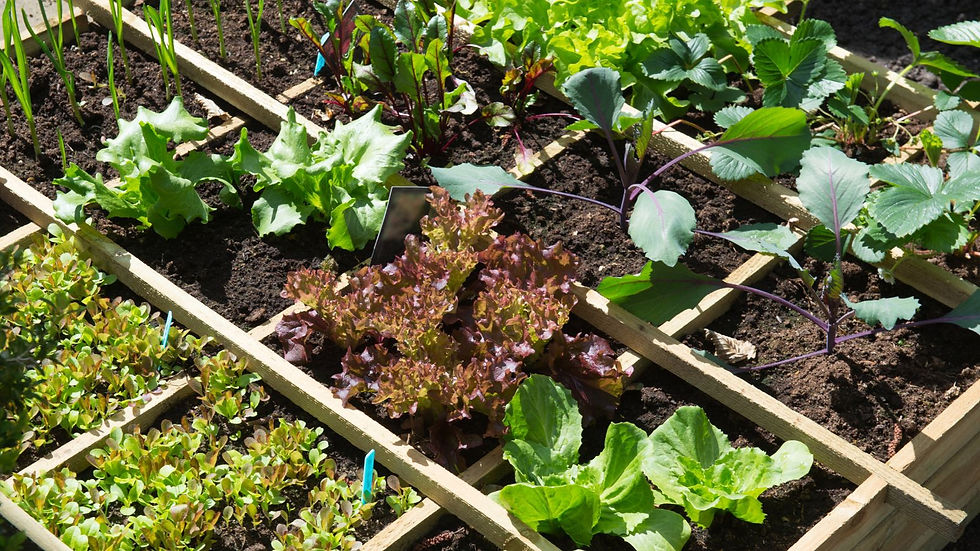
Planting Prep
Don't forget that your garden beds will likely be depleted of nutrients after your summer crops are spent. Top up beds with compost or aged manure to richen it back up and top with a fresh layer of mulch if needed.
Fall/Winter Pests/Diseases
In our area of central California, pest pressure in the summertime can be really overwhelming and many gardeners are pleasantly surprised to find that the winter brings on a much more peaceful season in the veggie garden. Little to no pests, less weeds, less watering. Where gardeners in other areas have to be vigilant in monitoring weather for frost, we almost never get a hard frost, rather a few mornings of light frost which can take down the small tender leafy greens but do no damage at all to plants in the brassica family.
We do however see some Powdery Mildew, I've personally never seen a case become so bad the crop is lost but that's partly because lots of fall crops have outer leaves that can be simply removed at the time of harvest, the mildew does not often reach the veggie inside, its especially is easy to remove on tight head-cabbage where the leaves are flat against one another. However if its a big concern, simply spray your fall crops with a fungicide like Neem oil, its easy to find in most garden supply stores and is safe and natural.

To Seed or Not to Seed?
I broke out the below crops into which items would be easiest to grow from seed if desired, just keep in mind that seeds are only viable for a few years after purchase so if you don't want to commit to planting the whole packet-worth, it might be something you'd rather buy as a starter from your local garden center.
Personally I only like to buy seed for crops I don't mind growing lots of or short season crops I can succession plant. For example, I don't mind buying a few packets of lettuce seed since I can plant small batches through the growing season but I wouldn't want to grow tomato from seed since I like to grow just 4-6 plants and a seed packet would contain many more seeds than that. However if you're super excited to try a new or rare variety it might be worth it to you to either toss the excess seed or grow lots of it and deal with the excess harvest. A seed packet is only $3-4 after all, its not a huge investment up front.
Easy Fall Crops to Start From Seed
In general, small leafy greens are a great for beginner gardeners because they grow quickly, some ready to harvest in under 30-40 days, especially if you're going to be harvesting as baby salad greens! This is also a fun area to try different varietals. Lettuces and other salad greens come in an array of flavors, colors, sizes, from large round head-lettuce types to spicy arugulas and tender mesclun's. You can often find 'Salad Mix' seeds which contain multiple varieties in one packet so you can plant a mixed row, super fun!
The only downside is they won't easily make it all the way through December-January without the use of some frost cloth or a cold frame setup. But you can certainly pick fresh greens through November and begin seeding again in mid-late February.
Lettuce

Lettuce is such a quick rewarding grow and in fall the plants are less likely to bolt (go to seed) in the cooler weather, meaning a longer harvest window. The delicate leaves wont grow vigorously in December/January but until then you can plant a few succession plantings. Lots of gardeners can attest that homegrown lettuces are far superior in flavor to their store-bought counterparts! Especially when grown in cold seasons, which tends to bring out the sweeter, less bitter flavors in veggies. The downside is that the fresh greens only stay crisp a few days in the fridge meaning they need to be used up quick.
When selecting varieties consider texture; for example my husband likes the small tender leafy greens whereas I enjoy the crunch of crisp larger head-lettuces. Smaller baby greens, mesclun mixes and other lettuce that don't form a tight head will be more thin and tender. Maybe try both to find what you enjoy!
When seeding these teeny tiny seeds, plant directly into their spot outside and be sure not to plant too deeply, most seed packets will recommend no deeper than 1/4 inch.
Since the little seeds are right on the surface its a challenge to keep the top of the soil moist enough for germination, check on them 1-2 times a day till they sprout and give them a gently spray as needed.
After they sprout you can thin the seedlings to allow the heads to grow to full size if desired.
At harvest you can pull the plant up entirely to make space for new greens or cut 1-2 inches above the base, this leaves the main growing stem intact and the plant till continue to push out new leaves for a continued harvest!
Harvest as soon as 1 month after seeding
Don't hose your lettuce seedlings too aggressively, this can push them out of place or drown them! Use the rain or shower setting on your hose end nozzle.
Plan for big fall salads topped with other seasonal finds like nuts, pomegranate or apple slices!
Wash and bag extra greens to share with friends/family
Spinach

Everyone knows this one! Spinach is another super quick growing green, great for salads and sandwiches. Spinach also can double as a 'stewing' green! Toss a couple handfuls into a soup for added nutrition and fiber! They can also be stored long-term if canned or frozen to add to soups or other warm winter dishes later in the season.
Tougher in the cold than most other small greens, longer growing/harvest window.
Seeding is a bit easier as the seeds are larger and get planted 1/2 deep. They should still be checked regularly until they sprout
Harvest by using scissors/shears to take the largest leaves as the plant continues to produce
Harvest as soon as 1 month after seeding
Radish

Another very quick harvest! I love a fresh slice of raw radish with my tacos but radish have plenty more uses to them! Cut fresh they can be used to top salads and garnish other dishes but they can also be turned into pickles for long term storage. The greens are also edible although raw they have a fuzzy/prickly texture so I recommend using them as strewing greens. The greens also make a nice treat to your chickens if you find them not very appetizing.
Harvest as soon as 1 month after seeding
Great for raised beds, soil should be loose to allow root to form
Seeds are similar to Spinach in size/planting teqnique.
Lots of amazing colors to try from white, green or pink. 'Watermelon' types, large white 'Daikons' or the ever elegant 'English breakfast' with its oval shape and pink base.
Sprouts should be thinned to allow the bulbs adequate room to grow, use the baby greens in salads!
Snap Peas
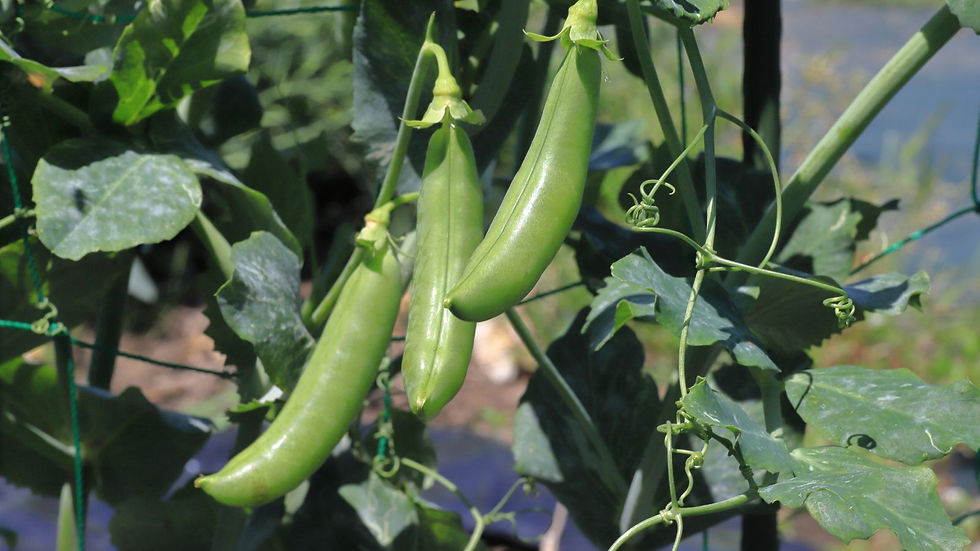
My personal favorite! I love harvesting the young tender pods when still slightly translucent. Even eaten raw right off the vine they are such a treat!
Lots of amazing varieties to choose from, anything with 'Sugar Snap' in the name is a winner. Green, Yellow and Purple types!
Easy to seed, peas are planted about 1-1 1/2 inch deep. much easier to keep moist than with smaller greens seeds
Harvest in about 2 months after planting
Must be grown on upright support, repurpose your summer tomato cages or stakes for this!
Super tasty and crisp for a snack, salad topper or fried in a little oil or butter to go along with dinner.
Last close to 10 days in the fridge.
Pods left on the vine to get a little tougher become good for freezing for long term storage. They're a bit too tender to be canned as they become mushy. Also if you're blending them into a purée for baby food, the puree can be frozen in cubes/blocks too.
Cilantro & Basil
Typical summer herbs like cilantro and basil likely have already gone to seed and are looking real tired - you can tuck in some fresh baby plants for herbs to last until the coldest point of the year in Dec/Jan.
Seed in rows or small clumps/patches.
These tend to be small seeds similar to lettuces so keep an eye daily on moisture
only last a few days after harvest in the fridge so try to use fresh
both can be blended into some oil or broth to make frozen seasoning ice cubes to pop in the pan for fresh flavors all winter.
Bok Choy

Very similar to lettuce in seeding/growing but makes a great stewing green. Fun and unique!
ready to harvest about 45 days after planting
can be grown in successions for continued harvest
won't grow as well after December/Jan cold
Easy Fall Crops to Grow from Nursery-Start
These plants tend to be a little more finicky to start from seed and/or you may only want to try growing a few plants rather than a whole packet-worth especially if its your first time growing them. There are plenty other easy to grow plants like Collard Greens, Broccoli Rabe, etc. but the plants listed below were chosen partially due to being well known. Remember - you want to grow what you want to eat!
Broccoli
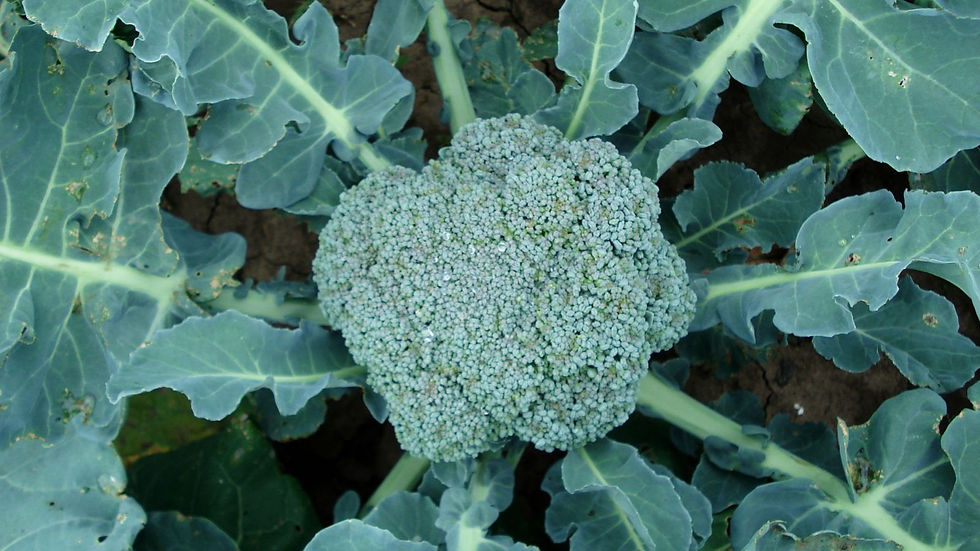
Broccoli is a robust member of the Brassica family as discussed in the intro. The crown of the broccoli, the part we like to eat, is actually a flower cluster of thousands of tiny yellow flowers. You'll want to harvest your broccoli when the crown is at its biggest but before the flowers open, although if you accidently wait too long, not to fret, the flowers are totally edible too and can be eaten the same way. The flowers can make a really pretty winter salad topper too!
Harvest when head is large but not yet blooming
Each plant will produce one main head at the top of the stem
Harvest 2-3 months after planting
After harvest you can either remove the entire plant from the garden or cut just the head off, the remaining stalk can sometimes put out a few offshoots of tiny crowns after the main harvest.
Only lasts in the fridge a few days before getting soft
Stores well frozen!
Brassica
Cabbage

I think cabbage are just so beautiful with their huge leaves they almost look like a big green flower and that's kind of what they are!
In California the warmth and humidity prevent us from being able to create 'Root cellars' but in the proper conditions certain varieties of cabbage can last in the fridge for up to 6 months! I highly recommend doing some research on proper storage before attempting as this can be a little complicated.
Lots of fun varieties to try! Green and purple heads. Shapes are fun too! Tall oval Napa cabbage, short stout Flat Dutch cabbage as well as typical Round Headed types.
Harvest 2-3 months after planting
Pick whole plant when head is at its largest but not trying to bloom/bolt
can be blanched and frozen but texture may not be as desirable
I'll be using my cabbage for potstickers which ill freeze after assembled!
Brassica
Cauliflower
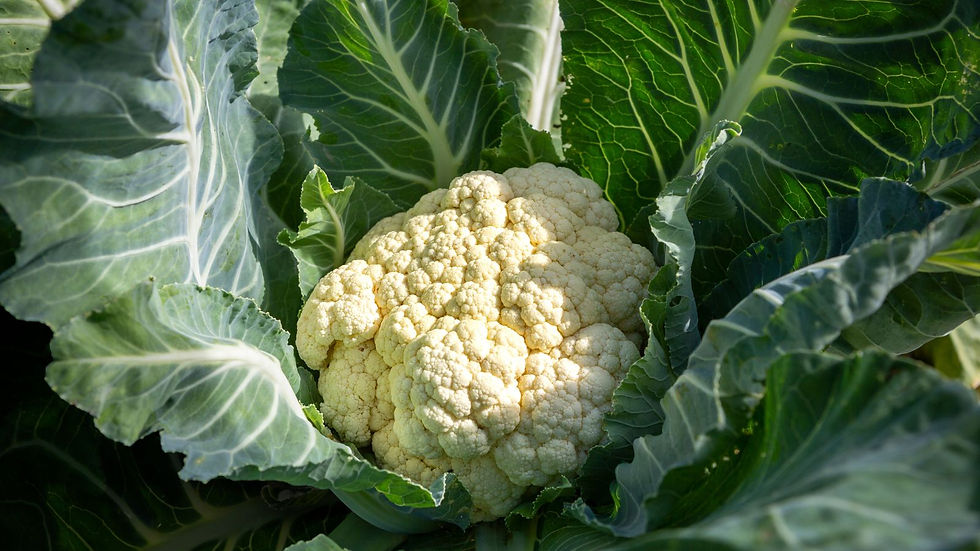
Very similar in growth to broccoli. Again we are harvesting the 'crown' or flower head before it fully blooms.
2-3 months to harvest
Very fun varieties in different colors, some stark whites, some more cream in color and even rich orange and purples!
Harvest when head is large but not yet blooming
Each plant will produce one main head at the top of the stem
only lasts 7-10 days in fridge
Freezes well for long term storage!
Brassica
Kale

Kale is a really rewarding grow! Nutrition powerhouse for use in salads, stews, smoothies, you name it!
Begin harvesting just 1 month after planting when largest leaves are reaching 12 inches in length
Harvest by plucking or snipping the largest leaves from the base of the stem only, leaving plant intact for continued harvest as the leaves continue to grow up the stem. Plant is spent/done when flowers form at the top and growth slows.
Eaten fresh raw in salads or as a stewing green in soups, stews, ect.
Lots of fun varieties to grow, different leaf colors and textures.
Freezes well for long term storage!
Brassica
Brussel Sprouts

Another personal favorite! The growth habit of Brussel sprouts surprises new gardeners! Its kind of unique and whimsical I think!
2-3 months to harvest
Harvest the whole plant and then cut the little sprouts off the stalk
Our favorite way to enjoy Brussel sprouts it sliced in half and pan fried till tender with salt pepper and a little butter! They get crisp on the flat side and have a rich nutty buttery flavor.
Keep fresh about 1 week in the fridge.
Freezes well for long term storage! I freeze them washed and pre-cut in halves so i can just drop them in the pan when i want to use them.
Brassica
Beets

Think of beets like a larger radish! Beets have a rich earthy flavor, typically eaten roasted. They naturally have a rich coloring that can be used to color dishes like making pink hummus!
Great for raised beds, soil should be loose to allow root to form
Come in an array of colors like rich reds, purples and even orange or white types!
Harvest about 2 months after planting when the top of the beet is poking above the soil
Last 7-10 days in the fridge
Can be frozen for long term storage
Can be made into pickles or canned plain for long term storage
Fall Crops For Intermediate Gardeners
These crops are still fairly easy to grow but may require more care during germination or harvest. If you have a few garden seasons under your belt, it might be time to give one of these crops a try!
Garlic

We all love this one! Garlic can be planted now to overwinter for a harvest next spring/summer. As you shop around for bulbs you'll find there are 2 distinct types. Soft neck and hard neck garlic. For Zone 9 hardeners you want to stock to Soft neck garlic types, these will grow best in our area. Garlic can be tricky because dense soils that don't allow proper water drainage can drown them or cause fungus/disease and not enough water retention can cause small or misshapen heads. Its got to be juuust right!
Lots of fun varieties to try, even some purple types!
Bulbs make for easy seeding, space them out several inches, no need to thin them out later
Great for raised beds, soil should be loose to allow bulb to form
ready to harvest when 4-5 leaves are starting to turn yellow/brown
Need to be 'cured' after harvest by being left out in a dry area till all the outer casing becomes paper dry
When cured and stored in dark, cool dry conditions Garlic can last 3-6 months on the shelf! Look for varieties known to store well. It can also be peeled and jarred or frozen for long term storage. If you have a dehydrator you can also dry them that way to make your own garlic powder! you can also mince garlic and freeze it in oil cubes to add to any dish.
Carrots & Parsnips

There are 2 tricky things about carrots. The first is that the teeny tiny seeds make it difficult to seed and keep them moist until they sprout. Its especially hard to get your fall crop started since seeding in late summer tends to be hot and dry, the opposite of what's desired. The second hard part is that tough soil, rocky soil, even clumps of mulch in the soil can cause the root to grow in all manner of deformed shapes, which silly as they may look, are not any less delicious!
Sow seed very shallow, 1/4 inch deep. Check soil moisture 1-2 times a day to ensure its most. Water gently as needed.
Thin as needed to allow roots space to grow, baby carrot greens can be tossed into salads or offered to farm animals
Harvest in 2-3 months
Fresh carrots last 2-3 weeks in the fridge. If you have a good cold dry dark pantry space you can grow storage types of carrots which have tougher skins and last several months on the shelf in the right conditions
Use carrots in all sort of applications! Juicing, Baking, Roasting, Fresh snacking, Salad topping. Carrot Cake!
Cut into chunks and freeze or jar or pickle for long term storage!
Great for raised beds with soft soil
Lots of super fun colors to try! Oranges, whites, purples, reds! Different growth habits too from round 'Oxhearts' to Typical pointy 'Nantes' and plenty of options in between.
Cool season grown carrots are said to be sweeter than spring/summer crops!
'alium' family
Onion & Leeks

Onions and Leeks are in the 'alium' family, similar to Garlic and are grown and harvested in a very similar fashion. The same challenges in growing garlic apply, we need good water retention and soft soil.
Plant now to overwinter for a harvest next spring/summer.
Look for varieties known to store well; lots of fun varieties to try, white, yellow and purple/reds!
Harvest in 3-4 months when the green tops turn brown and start to flop over.
Great for raised beds, soil should be loose to allow bulb to form
Need to be 'cured' after harvest by being left out in a dry area till all the outer casing becomes paper dry
When cured and stored in dark, cool dry conditions can last several months on the shelf! It can be frozen for long term storage. If you have a dehydrator you can also dry them that way to make your own onion powder!
What did you think of this post? Growing anything new in your garden this year?! Got any tips and tricks you'd like to share below?!





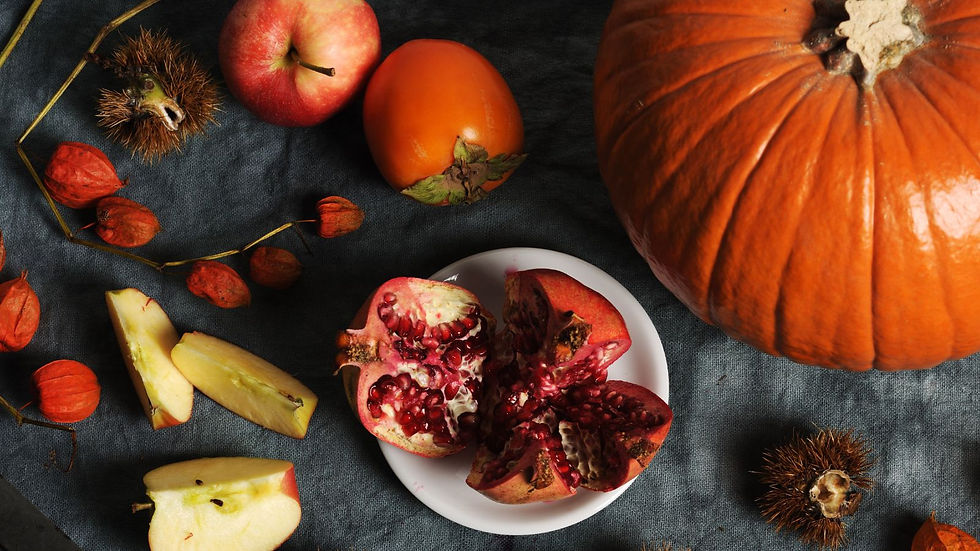


Comments